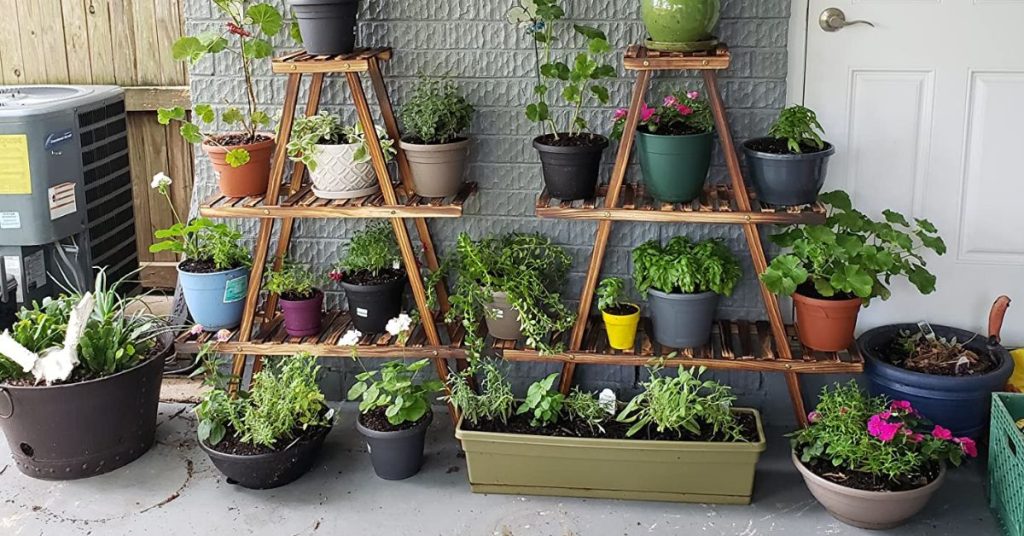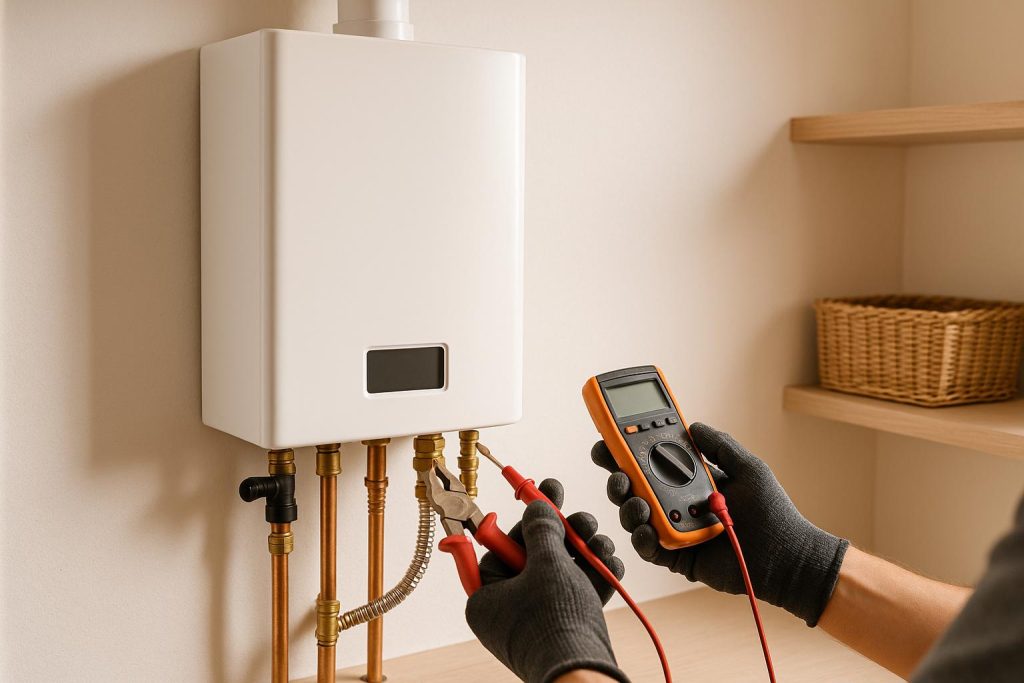When your space starts to feel heavy or uninspiring, a simple fix can be found in greenery. Without changing the walls or moving the furniture, adding a few indoor plants can lift the entire atmosphere. These living additions enhance your home’s look while offering genuine health benefits. Whether you’re updating a small apartment or a spacious home, plants can do more than decorate; they help you breathe better, feel calmer, and live more comfortably.
Why Greenery Belongs Indoors
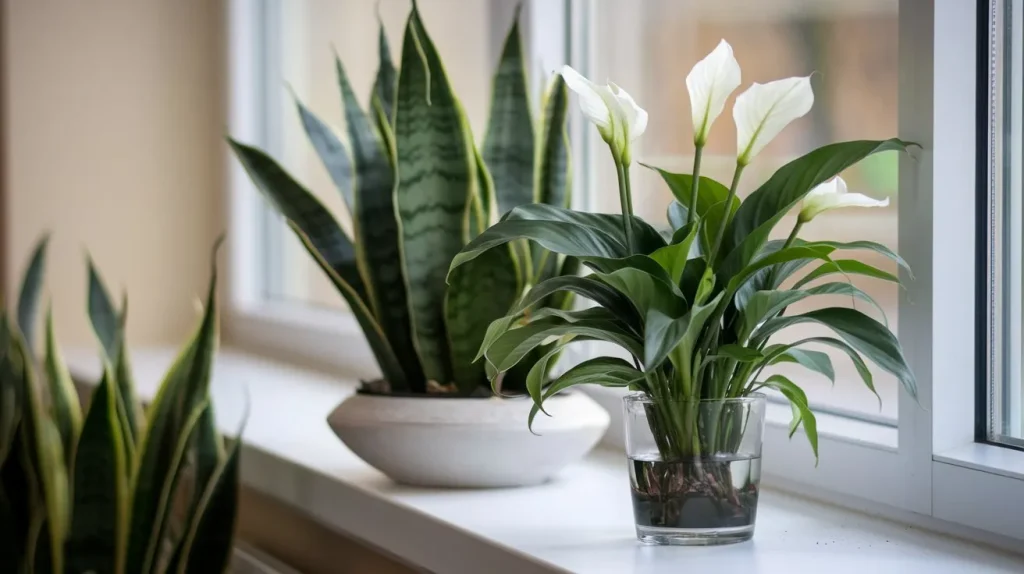
The presence of greenery goes beyond surface appeal. Plants naturally improve air quality, regulate moisture, and even reduce background noise.
Research shows that surrounding yourself with nature-inspired elements can lower stress and anxiety. Just seeing green foliage, especially after long work hours, can reset your mood. On a physical level, plants like peace lilies, snake plants, and rubber trees absorb indoor pollutants while releasing clean oxygen.
Choosing the Right Indoor Plants

To keep greenery healthy indoors, it’s important to understand your environment.
Start by evaluating how much sunlight enters each room. A bright room can host succulents and aloe vera, while shaded areas are better suited for ZZ plants, pothos, or low-light ferns.
If your schedule is busy or you’re new to plant care, stick to low-maintenance plants. These include:
-
Snake plant
-
Spider plant
-
ZZ plant
They’re hardy and require minimal watering or pruning.
If pets share your home, avoid toxic species. Instead, look for pet-safe indoor plants like calatheas, Boston ferns, or bamboo palms.
Decorating Naturally Without Overcrowding
Overstuffing a room with plants can feel cluttered. Let your greenery become part of your interior rhythm.
In the living room, place one tall plant like a fiddle leaf fig near a sofa or reading chair. Add a medium-sized plant to a coffee table or shelf, then hang one trailing variety from the ceiling. Using three different plant sizes creates a balanced, layered feel.
Avoid plastic pots or flashy planters. Use natural materials such as ceramic, clay, or woven baskets for an earthy, clean look.
Tabletop Plants That Work in Every Room
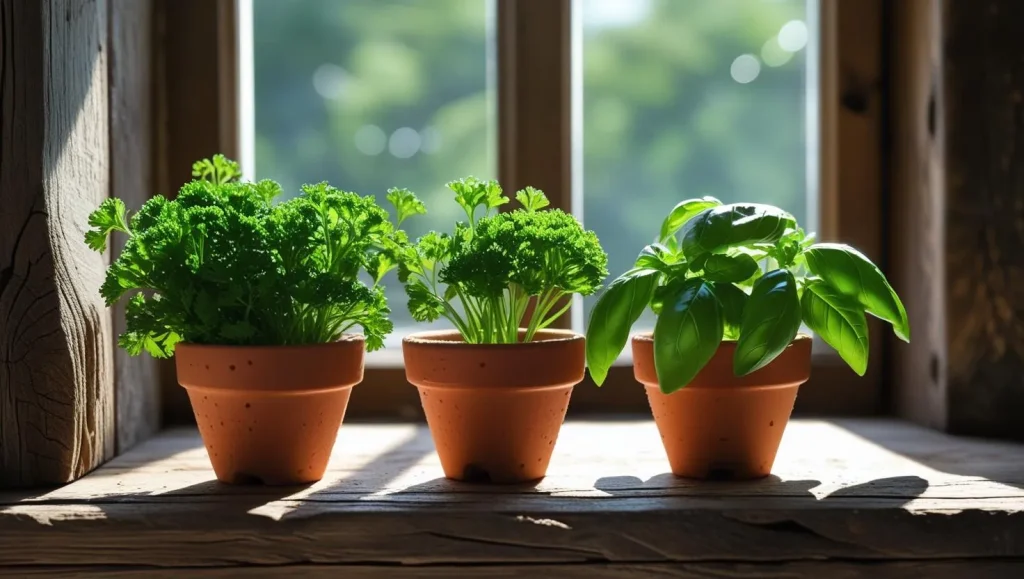
Placing indoor plants on tables instantly changes the room’s vibe. For bedrooms, calming greens like peace lily or snake plant are ideal. In kitchens, go with something functional like a small herb garden or rosemary shrub.
One or two tabletop plants are usually enough. Keep surfaces clean, and rotate the pots occasionally for even sunlight exposure.
Hanging Plants to Save Floor Space
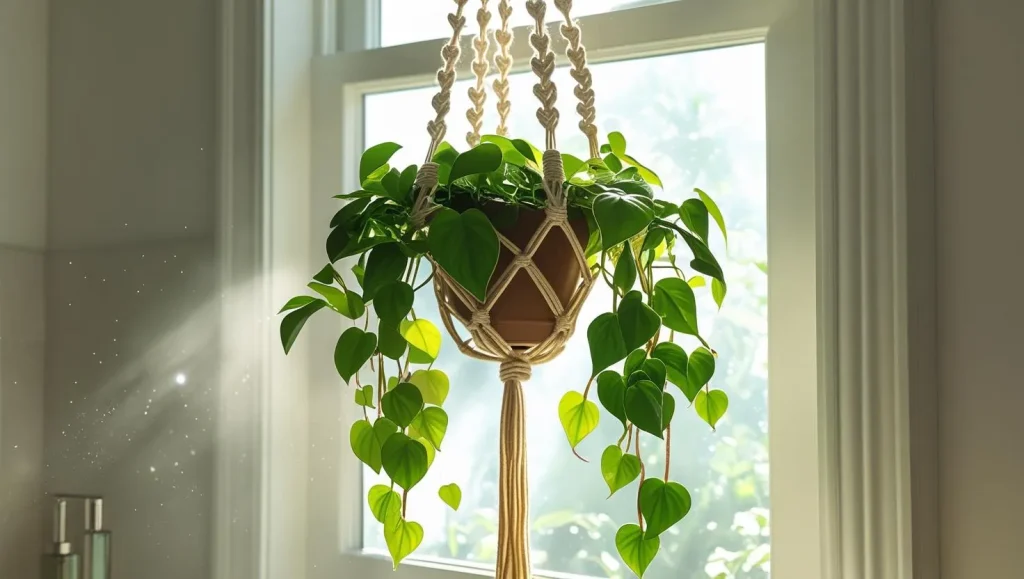
If floor space is tight, use vertical real estate. Hanging planters work great in entryways, kitchens, and bathrooms. Choose plants with trailing vines such as:
-
Pothos
-
English ivy
-
String of pearls
They create visual flow without occupying valuable surface areas.
Ensure your hooks are secure and placed near a light source for plant health.
Brighten Corners With Floor Plants
Empty corners often look stark. A large floor plant can turn these forgotten spots into highlights.
Choose bold types like fiddle leaf figs, areca palms, or rubber plants. These add vertical interest and help soften the hard edges of furniture.
Use tall baskets or ceramic pots to match your room’s color scheme.
Functional Greenery in the Kitchen
Adding plants to the kitchen not only improves the look but also adds flavor. A kitchen herb garden allows you to grow ingredients like mint, thyme, and basil right where you need them.
Use compact containers or mount small planters along a backsplash or on an open wall.
Vertical growing racks are also a great way to keep herbs accessible without using countertop space.
Terrariums: Compact Green Spaces
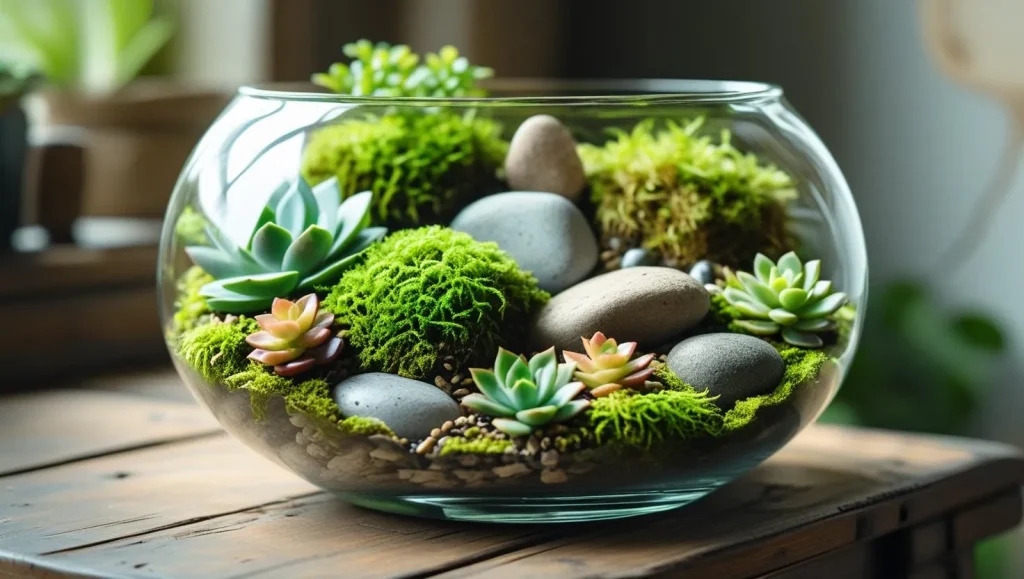
A terrarium offers the feel of a mini-garden in glass. These compact arrangements are great for desktops, bathrooms, or bedroom corners.
Create one with:
-
Layered gravel for drainage
-
Activated charcoal for freshness
-
Soil and low-maintenance plants like succulents or air plants
Avoid direct sunlight as it can overheat the glass container.
Build a Vertical Garden on Any Wall
A vertical garden is both practical and artistic. Use planters mounted on reclaimed wood or modular panels to grow herbs, ferns, or flowering vines.
This approach is especially useful in apartments or homes with limited surface area.
Make sure to use lightweight planters and water-resistant backings to protect your walls.
Plant Care Without the Guesswork
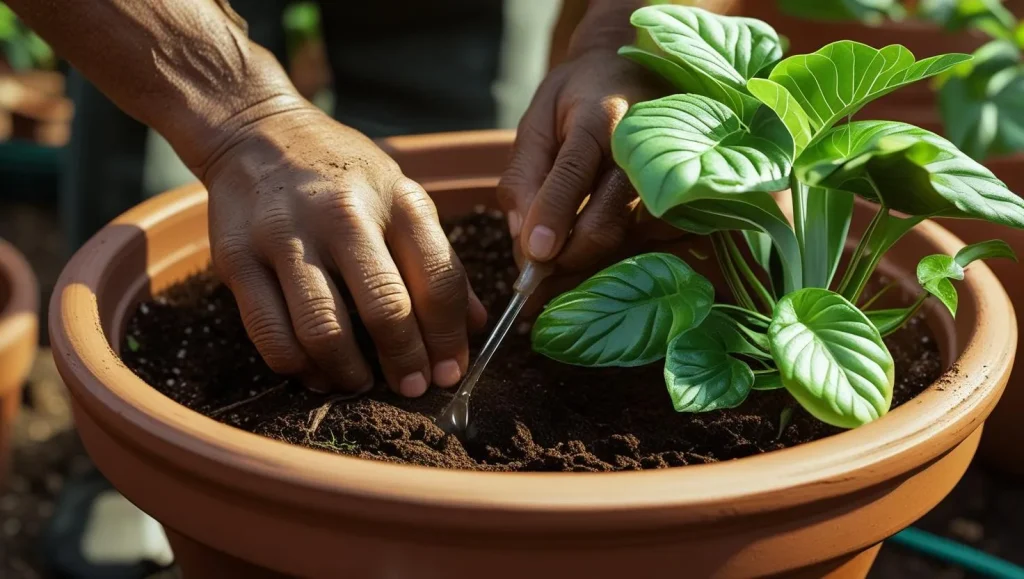
Most indoor plants thrive when watered correctly and given enough light.
As a rule, water when the top inch of soil feels dry. Always check light levels; if leaves turn yellow, they may need more light or less water.
Cut dead leaves regularly to keep the plant healthy. Rotate plants weekly so they grow evenly. If pests appear, use a neem oil spray or gently wipe leaves with diluted dish soap.
Let Planters Complement Your Style
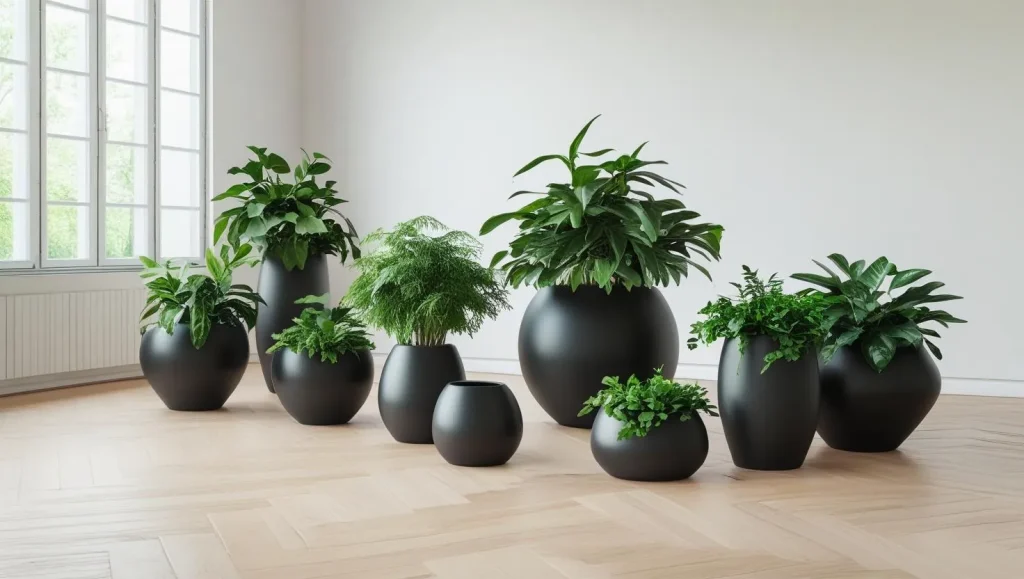
Even the healthiest plant can look out of place in the wrong container. Match your pot to your home’s style.
Go for matte finishes in black or white for a modern look, or use terracotta, cement, or bamboo for rustic charm.
Add subtle plant stands to raise pots to window height or group at different levels.
Build a Relaxing Outdoor Area
Take the benefits of greenery beyond your interiors by designing a calm outdoor space.
Use potted plants, hanging baskets, or a vertical garden on your patio or balcony. Add comfortable chairs, a soft rug, and a few throw pillows. Water features like tabletop fountains can create a gentle background sound and attract birds.
Choose plants based on local climate and sunlight access.
Keep It Sustainable
Being eco-conscious with your greenery choices helps your space and the planet.
-
Buy plants from local growers to reduce emissions.
-
Use organic compost and natural pest treatments.
-
Repurpose containers like tins, jars, or wooden crates into creative planters.
Sustainability adds personality. Reused materials often carry more charm than store-bought options.
FAQs
Q: Which indoor plants are easiest to maintain?
A: Snake plants, ZZ plants, and spider plants are low-maintenance and ideal for beginners.
Q: Can indoor plants help purify the air?
A: Yes, many plants like peace lilies and snake plants filter indoor toxins and improve air quality.
Q: What are some pet-safe indoor plants?
A: Spider plants, Boston ferns, and bamboo palms are safe options for homes with pets.
Q: How often should I water my houseplants?
A: It depends on the plant, but generally, water when the top inch of soil feels dry.
Q: What if I don’t have much space?
A: Use vertical wall gardens, hanging planters, or compact terrariums to add greenery without clutter.
Conclusion
Adding greenery is more than just a design decision. It improves your home decor, boosts air quality, and contributes to your well-being. The right plants can bring calm, color, and structure to your environment without demanding much in return.
Whether you’re drawn to a single peace lily in a quiet room or want to build a full vertical garden, you’ll find that nature has a way of making any space feel like home.


